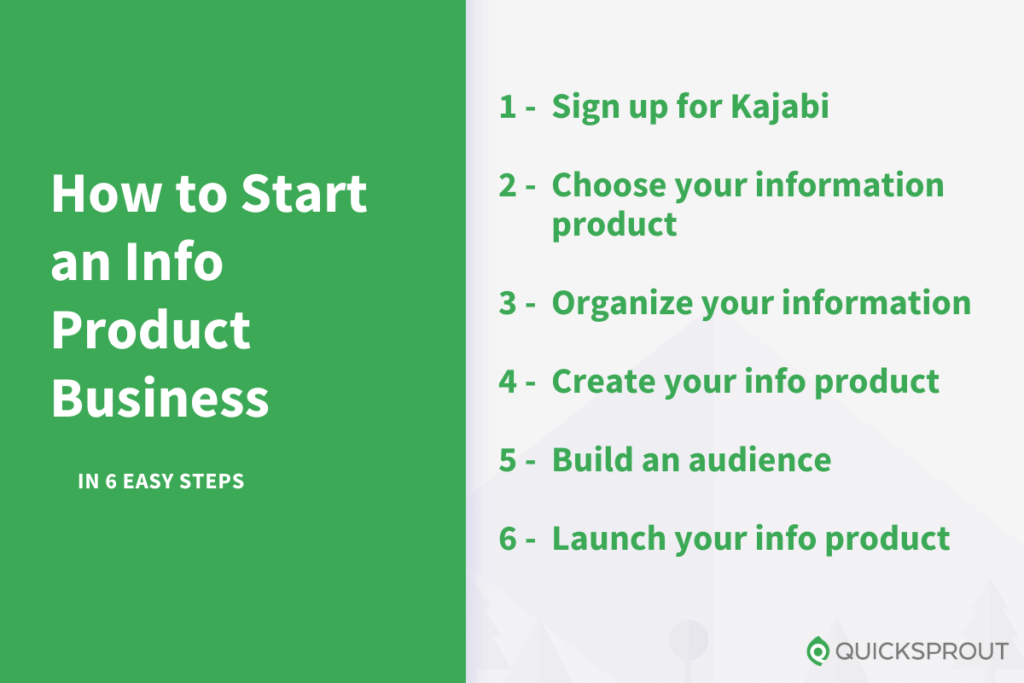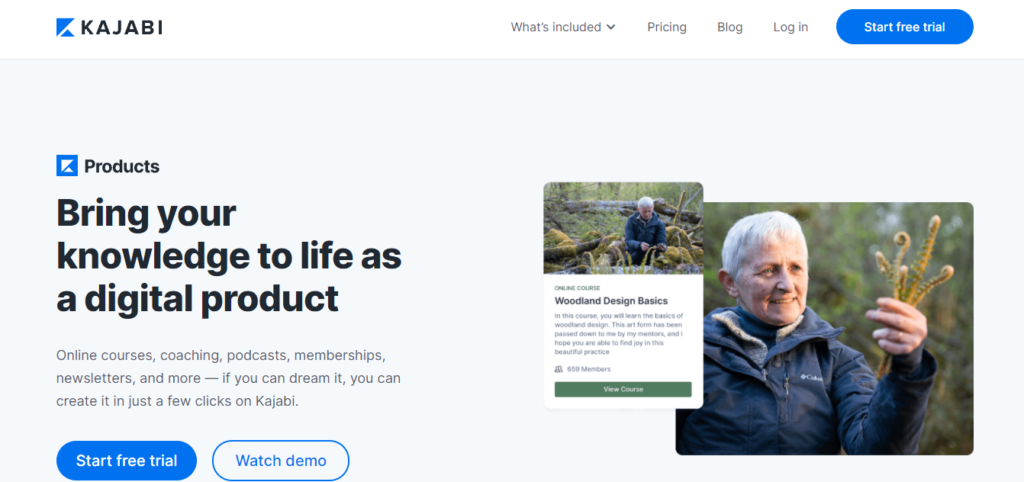An info product business is an excellent avenue for monetizing your knowledge, skills, and passions.
With the different mediums available for packaging your information, you are bound to find a platform that appeals to you.
This business has its challenges, like finding a profitable niche and creating top-notch content from scratch.
However, the effort is worth it as there are few things more gratifying than getting paid for what you love to do and are knowledgeable about.
Top Business Formation Services to Start an Info Product Business
If you are serious about starting an info product business, you should file with the state to avoid any tax complications. Here are the best business formation services:
- ZenBusiness – Best overall value
- Incfile – Best low-cost formation services
- Northwest Registered Agent – Best registered agent services
- Rocket Lawyer – Best for ongoing legal advice
- LegalNature – Best for managing business formation documents
- Inc Authority – Best free LLC setup
- LegalZoom – Best range of business formation services
- Incorporate – Best for C-Corps and S-Corps
- Swyft Filings – Best customer support
- MyCompanyWorks – Best for fast setups
- MyCorporation – Best for free EIN
You can read our full reviews of each business formation service here.
6 Steps to Start an Info Product Business
Ready to get started? Just follow these simple steps below:
- Sign up for Kajabi
- Choose your information product
- Organize your information
- Create your info product
- Build an audience
- Launch your info product

Easy Parts of Starting an Info Product Business
One of the best parts of starting an information product business is the low barrier to entry. Virtually anyone with a passion and skill in a specific field can create and sell an info product. This is particularly true for freelancers who already trade their time and expertise for money. In addition, transitioning to info products can be a great way to generate passive income.
Additionally, this business isn’t capital intensive. For the most part, you can start creating content for free if you do it on your own. Even if you choose to hire a designer, this cost is likely to be a one-time spend.
The main overhead will probably be merchant (credit card) processing fees and sales tax. You’ll get to keep a large chunk of the money you charge clients, which isn’t true of most other businesses.
Info products are also very easy to scale. For example, say you create an ebook about UX design. You can potentially reach millions of people with just one ebook. Thus, there is a great potential for profits without manufacturing tons of physical products to satisfy customer demand.
Finally, information products offer an exceptional opportunity to scale an existing business. This opportunity is especially true for service-based businesses such as teaching, consulting, coaching, graphic design, and auto repair. For example, your info products can help to set you up as an authority in your field.
Platforms like KAJABI make the barriers to entry even lower. This platform comes with templates to create virtually any digital product you can think of, including memberships, coaching, online courses, newsletters, podcasts, and communities. KAJABI prices start at $119 per month and offer a 14-day free trial.

The Difficult Parts of Starting an Info Product Business
Admittedly, not everything about the information product business is straightforward. But just like any other business, there are specific challenges you can expect when starting your business.
The most obvious challenge is the information overload in our digital age. Unless you’re working in a particular field or niche, the information you’re offering is already available. This information is also likely free with a simple Google search. So, packaging your knowledge in a way that people are willing to pay for it can be a challenge.
Another challenge with this business is subjectivity. The content creator and the consumer often don’t see eye to eye when judging the value of an info product. This situation can lead to refund requests. On average, info products see a higher refund rate than physical products.
Customers view a refund policy as proof that the content creator stands behind their product. So, not offering a refund policy could work against you.
Lastly, staying up-to-date can be difficult in some niches. For example, things change rapidly in the technology niche. So, your info products can become dated quickly. It takes a lot of work to provide up-to-date products to your clients constantly.
The info product business is still a great venture to start despite its challenges. If you’re ready to take the next step, here’s how to go about creating your information product business:
Step 1 – Sign Up for KAJABI
Many people use KAJABI to create online courses from scratch. But this platform offers so much more than just courses. You can also create websites, memberships, podcasts, newsletters, and coaching. Additionally, KAJABI comes with valuable tools to help you every step of the way, including building an online community, email marketing, creating automated funnels and campaigns, and even setting up payments.
Choose Your Plan
KAJABI offers three pricing tiers, including:
- Basic – $199 per month
- Growth – $159 per month
- Pro – $319 per month
All plans come with a free trial. You can certainly get by with the Basic plan, but the Growth plan comes with several valuable extras. For example, the Growth plan has 24/7 chat support, advanced automation, and an affiliate program. You can also remove KAJABI branding, which is useful when you want to build your brand.

Create Your Account
Creating your account is very straightforward. You’ll need to enter your name and email address to create the account. After that, you’ll automatically get the free trial version. You can pay as soon as you are comfortable getting locked into the platform.

Step 2 – Choose Your Information Product
The information product business is an open field with many possibilities. So, you’ll need to narrow down the options and come up with a single business idea to pursue. This step will inform every aspect of your business, so getting it out of the way sooner is better.
Choose Your Format
There are many avenues to get into the product information business. The information product format, in this case, describes how you will package and deliver your information. Some of the most common formats include:
- Online courses
- Ebooks
- Webinars
- Live seminars
- Membership sites
- Computer software
- Data
The format you choose is entirely up to you. But there are a few criteria you can use to point you in the right direction. Focus on your strengths, for starters. For example, some people are strong writers, others are natural in front of the camera, while some have a knack for creating templates.
Next, figure out how much time and money you are willing to put into your business. Some products are cheaper and easier to create than others. For example, creating an ebook is generally very straightforward. You only need to structure your information into chapters. You can make the ebook in Word and save it as a PDF to sell.
However, creating an online course will require a more significant time and effort investment. This format also demands higher expertise and subject matter knowledge than an ebook.
You should also consider what format and style best fits your existing business. Whichever format you choose, just make sure it matches the time and effort you are willing to put into it.
Whatever format you select, KAJABI will help bring your product to life.

Choose Your Niche
With the format out of the way, it’s time to choose a niche. There are nearly infinite options, which means you are bound to find something that resonates with an audience. The best place to start is with your passions and interests.
Creating your first info product is a demanding process. So, passion can help you get through the rough patches. First, make a list of at least ten topics that you are interested in.
Think about problems that you can solve. People are paying for your information to help them solve a problem. Google Trends and Google Adwords are great places to find out what people are searching for. Simply type in the keywords for the subjects you’re interested in.
You’ll get a good idea of the problems people are facing and that you can help them to solve.

Validate Your Info Product Idea
Building an info product takes time, money, and energy. Therefore, it is a good idea to find out if people are interested in buying it in the first place. Unfortunately, this is where many new businesses fail before they even start.
Do market research. Again, Google Trends is a great place to find out if the niche you chose has a good level of interest. Similarly, Google AdWords and Google Keyword Planner are great tools for researching your keywords. These tools will help you find out the monthly search volume for your niche and the projected competition for the same keywords.
You’ll mainly be looking for a niche with high demand and relatively low competition.
Spend time looking at your competition. What are they selling? What makes it attractive? What is their pricing strategy? Look for ways you can set yourself apart.
Step 3 – Organize Your Information
You’ll need to create a clear path for developing your info product. There’s a lot of information you could potentially offer your audience, even in a very narrow niche. However, this abundance could easily paralyze you into indecision.
Find Out What People Need To Know
Decide the specifics of what your audience needs to know about your topic. You have total freedom here. But get a clear idea about the topics you will cover and to what extent. In short, determining your scope will help you structure the information.
And ask for feedback on the info product you want to launch. Social media groups and related forums are great places to solicit input from unbiased strangers.
Create an Outline
Create an outline for your product. This outline will be the roadmap for creating your product and includes the topics you plan to cover and their order. A chronological overview helps determine where each piece of information will go in the overall structure.
An outline also helps keep you focused when developing your info product because you’ll always know if you are on the right track. KAJABI helps you to gather all your information in one place, including drafts, outlines, and research. You can easily retrieve the information when you need it.

Step 4 – Create Your Info Product
You have a niche, a target audience, and a plan for your information product. Now comes the fun part–creating the actual product. This process can be gratifying, but it is also potentially stressful. Either way, you want to create an information product that sells.
Do What Works
You don’t have to reinvent the wheel in this business. You already identified your competition during the market research. Now you can model successful info product creators. But don’t forget to put your unique twist, personality, or perspective into it.
Even your less successful competitors can prove helpful. For example, you can review the info products you don’t like for inspiration on what not to do.
Improve on Existing Products
It is not just about modeling successful info products. You also need to improve on the existing products if you hope to get an edge. Some of the ways you might improve an info product include:
- Making it easier or faster
- Simplifying the information or the product
- Adding or subtracting information
- Reworking the concept or product
- Reducing or eliminating product weaknesses
Use Supporting Tools
It is easier than ever to create information products. There are plenty of tools out there to help you with the process. For example, tools like LibreOffice and OpenOffice help you to create ebooks easily. Similarly, you can use tools like Free Screen Recording or EZVid to create videos.
Edit and Proof Your Product
There’s probably already stiff competition in your niche. Additionally, today’s audience demands quality and is willing to pay for it. Therefore, take the time to create the best quality product you can.
It is also worth getting an expert’s opinion on the quality of your product. Many editors and consultants will review and edit your materials for a fee. Anything you can do to produce a high-quality product will pay for itself in revenue.
Step 5 – Build an Audience
An info product business relies heavily on an active audience. You can market directly to your audience to generate revenue. So, building a following is critical to generating income in this business.
Build a Website
It doesn’t matter if you won’t be selling your info product directly on your website. A solid web presence is a must in today’s business environment. Fortunately, you don’t need to be a web designer to build a professional website.
Content management systems (CMS) like WordPress, HubSpot, and Joomla allow you to create a website from scratch with little or no coding experience. There are even several free website builders on the market.

You don’t even need a different platform if you’re already on KAJABI. The platform lets you easily create a professional website from scratch. Be sure to include a sales page detailing your product and its features and benefits. Also, redirect your audience to where you’re selling the info product, such as Amazon or Udemy.
Create an Email List
Email marketing is far from obsolete. It is one of the easiest, cheapest, and most effective ways to reach an audience. Plus, it is easy to automate.
The easiest way to build your list is to embed a signup form on your website. Be sure to embed the form on high-traffic pages. Also, place the form in visible areas such as splash pages, sidebars, headers, and footers.
Tools like Mailchimp allow you to design, create and embed signup forms easily. Other options for building your email list include social media accounts and your email signature.
Finally, offer value in return for people signing up for your email list. This value could be free tips, insightful information, or a sneak peek into your info product. KAJABI offers professional email templates.
Additionally, the platform includes email marketing best practices to help you create full-proof emails. You can even automate the campaign to make your work easier.

Guest Post
Guest posts are a great way to reach a new audience. Find bloggers or companies with a strong following in your target market and build relationships with them. Make sure you’re allowed to link to your website in the content or author bio for this strategy to work.
Finally, be sure to link to your landing page and not the homepage. You want to keep your audience’s attention the minute they land on your website. The landing page offers an excellent opportunity to build engagement from the get-go.
Step 6 – Launch Your Info Product
You’re finally ready to bring your info product to the world. All the hard work will eventually pay off. Hopefully, you’ll start generating income soon to justify your effort. But the work continues even after the launch. Unfortunately, the adage “build it, and they will come” doesn’t apply to the info product business.
Create a Launch Calendar
There’s a lot that goes into launching an info product. So, a launch calendar helps ensure you don’t cram everything at the last minute. Plus, it’s easy to procrastinate, given the enormity of the task ahead. Will your audience love the product? Is it as good as you think it is? Hard deadlines offer the push you need to launch.
Set realistic deadlines for all the tasks you need for a successful launch. Give yourself enough to complete each task correctly.
Work Your List
Just because people subscribed to your newsletter doesn’t mean that they are ready to buy. Generally, people like to buy from brands they are familiar with. So, focus on building your relationships and getting your name out there before making the big sales pitch.
Create a welcome series for your audience to get to know you. Ideally, you should be sending out related newsletters and other content weekly. Do this for at least six or seven weeks before presenting your info product.
Offer Your Product
You are officially ready to bring your info product to the market. By now, your followers are primed and most likely ready to buy. However, there are a few ways to approach the actual launch.
First, you can choose to pre-sell your info product while doing the final touches for the actual launch. This option is a great motivator. Your audience will be waiting for the launch date, so you have no choice but to deliver. Also, pre-selling the info product can help generate revenue to offset your costs.
Secondly, you can opt for the evergreen approach. This means that the info product will be available indefinitely. The advantage here is you can make money year-round. But that also means you need to promote your product actively all year.
Lastly, you can opt for the standard launch. Here, you set a timeframe for when your audience can purchase the info product. Between five and ten days is a good window, but that is entirely up to you. This option is great for creating urgency for people to buy your product. Also, you won’t need to market the info product year-round.
from Quick Sprout https://ift.tt/4jNtQnM
via IFTTT
No comments:
Post a Comment